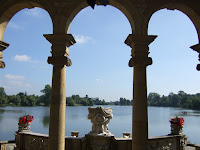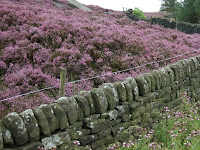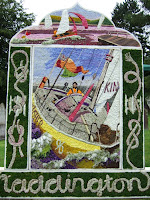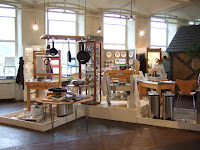
 Borde Hill Garden was the Historic Houses Association Garden of the Year Award winner in 2004. Perhaps we saw it ‘between seasons’ or something but it was not long before we were ‘Borde’ and left.
Borde Hill Garden was the Historic Houses Association Garden of the Year Award winner in 2004. Perhaps we saw it ‘between seasons’ or something but it was not long before we were ‘Borde’ and left. A slow, lazy mosey across the Surrey countryside took us to Loseley Park where we ended our extended Elizabethan expedition.
A slow, lazy mosey across the Surrey countryside took us to Loseley Park where we ended our extended Elizabethan expedition. Loseley has an attractive formal garden in the old walled garden area and a mulberry tree reportedly planted by Elizabeth I.
Loseley has an attractive formal garden in the old walled garden area and a mulberry tree reportedly planted by Elizabeth I.We began at Hever Castle where Anne Boleyn, mother of Elizabeth I was born and ended at Loseley Park where Elizabeth stayed a number of times and where they have a fine portrait of Anne Boleyn that has been coveted by the curators of the Tower of London for their exhibition. The More-Molyneux family declined to sell the picture on the grounds that Anne had never been happy in the Tower …
 Along the way we saw two other fine Elizabethan mansions; and in all three cases, the descendants of the original occupants have lived in the houses for the last 450 years. As is typical of these English stately homes, they each have their special treasures:
Along the way we saw two other fine Elizabethan mansions; and in all three cases, the descendants of the original occupants have lived in the houses for the last 450 years. As is typical of these English stately homes, they each have their special treasures:  the second largest Van Dyke in the country; the only such brasses in the country; one of three such chests in the world and so on. What an awesome responsibility to be the guardians of items of such rarity and it is a wonderful thing that the public has access to see them.
the second largest Van Dyke in the country; the only such brasses in the country; one of three such chests in the world and so on. What an awesome responsibility to be the guardians of items of such rarity and it is a wonderful thing that the public has access to see them.In contrast to the times-past, current events were very much in focus as the gateways to these properties were still showing evidence of the recent foot and mouth scare with disinfectant mats and foot wash facilities, in fact, the countryside in this area had only just been re-opened for full access.


































 The next village was Great Hucklow. This small village was planning their annual village gala; all the gardens were decorated and two wells dressed.
The next village was Great Hucklow. This small village was planning their annual village gala; all the gardens were decorated and two wells dressed. 
















